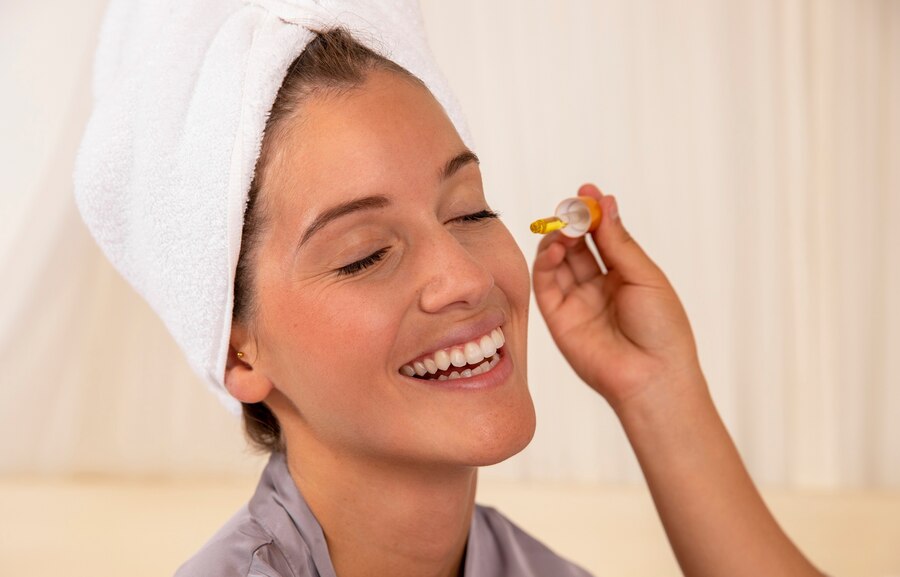Introduction to the Ingredient
Doxycycline, the darling of dermatologists, isn’t just for fighting off pesky bacterial infections anymore. This versatile antibiotic has found its way into the world of skincare, promising clearer, smoother skin for the beauty-conscious crowd. But before you slather it on, let’s dive into the scientific nitty-gritty behind its purported benefits. Doxycycline is a broad-spectrum antibiotic commonly used in the treatment of bacterial infections. While primarily known for its role in medicine, doxycycline has also found applications in skincare due to its anti-inflammatory and anti-acne properties.
How Does it Work?
Doxycycline works by inhibiting the growth of bacteria responsible for acne, such as Propionibacterium acnes. It also possesses anti-inflammatory properties that help reduce redness, swelling, and inflammation associated with acne lesions. Additionally, doxycycline may inhibit the production of certain enzymes involved in the formation of acne lesions.
Key Benefits
- Acne Treatment: Doxycycline is effective in treating inflammatory acne lesions, including papules, pustules, and nodules.
- Anti-inflammatory: By reducing inflammation, doxycycline can help improve the appearance of acne-prone skin and promote faster healing of acne lesions.
- Prevention of Scarring: By targeting the underlying causes of acne, such as bacteria and inflammation, doxycycline may help prevent the formation of acne scars.
Usage in Beauty Products
Who knew that an antibiotic could double as a skincare superhero? Doxycycline’s anti-inflammatory properties make it a go-to ingredient for tackling stubborn acne and rosacea. Beauty products infused with doxycycline promise to banish blemishes and calm irritated skin, leaving you with a complexion worthy of a skincare ad. Doxycycline is primarily used in prescription skincare products, such as topical gels, creams, and oral medications, for the treatment of acne. It is typically prescribed by dermatologists for moderate to severe cases of acne that have not responded to other treatments. Doxycycline should be used under the supervision of a healthcare professional and as part of a comprehensive acne treatment plan.
Safety and Precautions
Before you start dousing your face in doxycycline-infused potions, it’s crucial to consider the safety implications. While doxycycline is generally well-tolerated when used orally for short durations, slathering it on your skin may come with its own set of risks. Proceed with caution, beauty buffs! While generally safe when used as prescribed, doxycycline may cause side effects such as gastrointestinal upset, photosensitivity, and yeast infections. Long-term use of doxycycline may also lead to antibiotic resistance and disruption of the gut microbiome. It’s essential to follow your healthcare provider’s instructions and monitor for any adverse reactions while using doxycycline for acne treatment.
Compatibility with Other Ingredients
Mixing skincare ingredients is like concocting a magical potion, but not all combinations play nice together. While doxycycline may play well with some ingredients, it could throw a tantrum when paired with others. Understanding the compatibility of doxycycline with other skincare ingredients is key to avoiding skincare mishaps and achieving that coveted glow. Doxycycline may interact with certain skincare ingredients and medications and even birth control. It’s essential to inform your healthcare provider about any other skincare products or medications you are using to avoid potential interactions or adverse effects.
Scientific and Research Findings
Ah, the meat and potatoes of skincare science! While anecdotal evidence may sing doxycycline’s praises, we’re here to sift through the peer-reviewed literature for the hard facts. From clinical trials evaluating its efficacy in acne treatment to studies probing its anti-inflammatory prowess, let’s separate the skincare myths from the scientific truths. Research has shown that doxycycline is effective in reducing inflammatory acne lesions and improving overall skin condition. A study published in the Journal of the American Academy of Dermatology found that oral doxycycline combined with topical treatments significantly reduced acne lesions compared to topical treatments alone.
Common Variants or Derivatives
Doxycycline is available in various formulations, including oral tablets, capsules, and topical gels. Common derivatives include minocycline and tetracycline, which are also used in the treatment of acne.
Considerations When Using the Product
- Follow Prescribing Instructions: Use doxycycline as prescribed by your healthcare provider and follow their instructions carefully.
- Sun Protection: Doxycycline may increase the skin’s sensitivity to sunlight. It’s essential to use sunscreen daily and avoid prolonged sun exposure while using doxycycline.
- Monitor for Side Effects: Be vigilant for any adverse reactions or side effects while using doxycycline and notify your healthcare provider if you experience any concerning symptoms.
References
- Del Rosso, J. Q., et al. “Adjunctive Use of Oral Antibiotics in Inflammatory Acne.” Journal of the American Academy of Dermatology, vol. 78, no. 1, 2018, pp. S19-S28.
- Leyden, J. J., et al. “Tetracyclines in Acne and Rosacea.” Dermatologic Clinics, vol. 37, no. 2, 2019, pp. 175-184.
- Thiboutot, D., et al. “New Insights into the Management of Acne: An Update from the Global Alliance to Improve Outcomes in Acne Group.” Journal of the American Academy of Dermatology, vol. 79, no. 1, 2018, pp. S47-S57.
Conclusion
Doxycycline may have carved out a niche in the skincare realm, but its journey from antibiotic to beauty elixir is riddled with caveats. It has worked for me personally but while it may hold promise for those battling acne and inflammation, its safety profile and potential for antibiotic resistance warrant a critical eye. Proceed with caution, and remember true beauty comes from healthy skin, not just a trendy skincare ingredient. Doxycycline plays a valuable role in the treatment of acne by targeting bacteria and inflammation associated with acne lesions. While effective, it’s essential to use doxycycline under the guidance of a healthcare professional and as part of a comprehensive acne treatment plan. By understanding its benefits, precautions, and considerations, individuals can make informed decisions about incorporating doxycycline into their skincare regimen to achieve clearer, healthier skin.
Frequently Asked Questions (FAQs)
- Can doxycycline be used for other skin conditions besides acne? While primarily used for acne treatment, doxycycline may also be prescribed for other inflammatory skin conditions, such as rosacea and perioral dermatitis, under the guidance of a healthcare professional.
- How long does it take to see results from using doxycycline for acne? The timeframe for seeing results with doxycycline treatment can range for just 2 weeks to 2 months.
As we navigate the ever-evolving landscape of skincare trends, let’s approach doxycycline with a healthy dose of skepticism and a commitment to evidence-based beauty. Your skin deserves nothing less!



